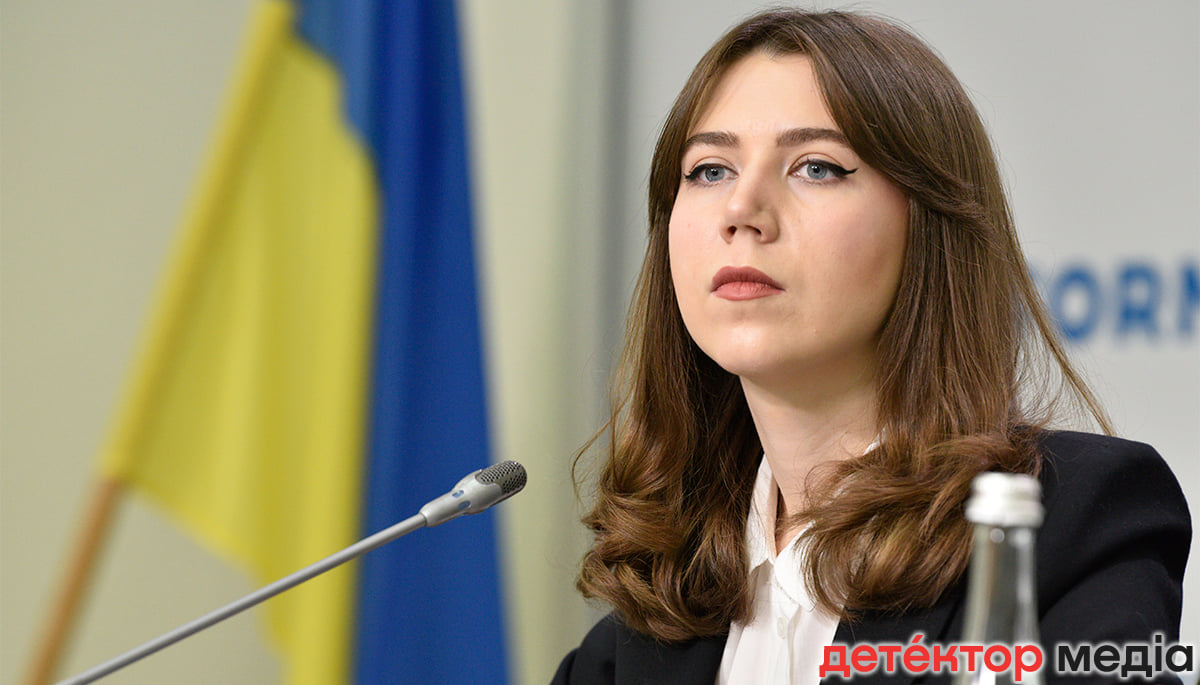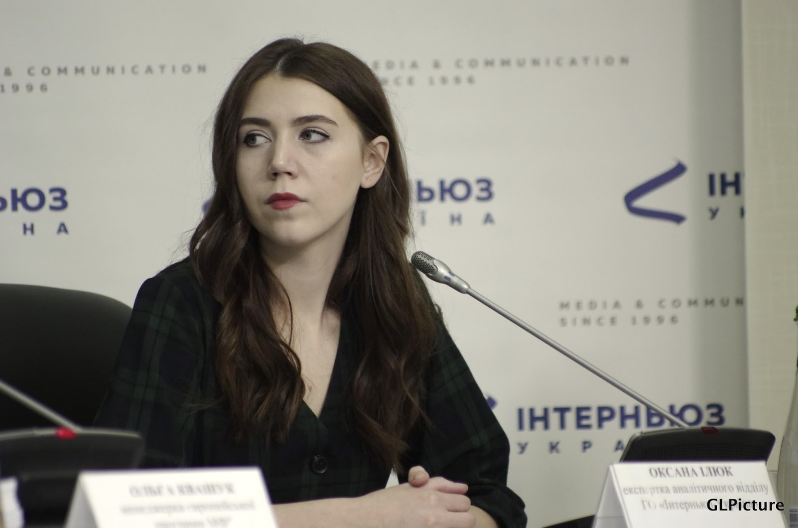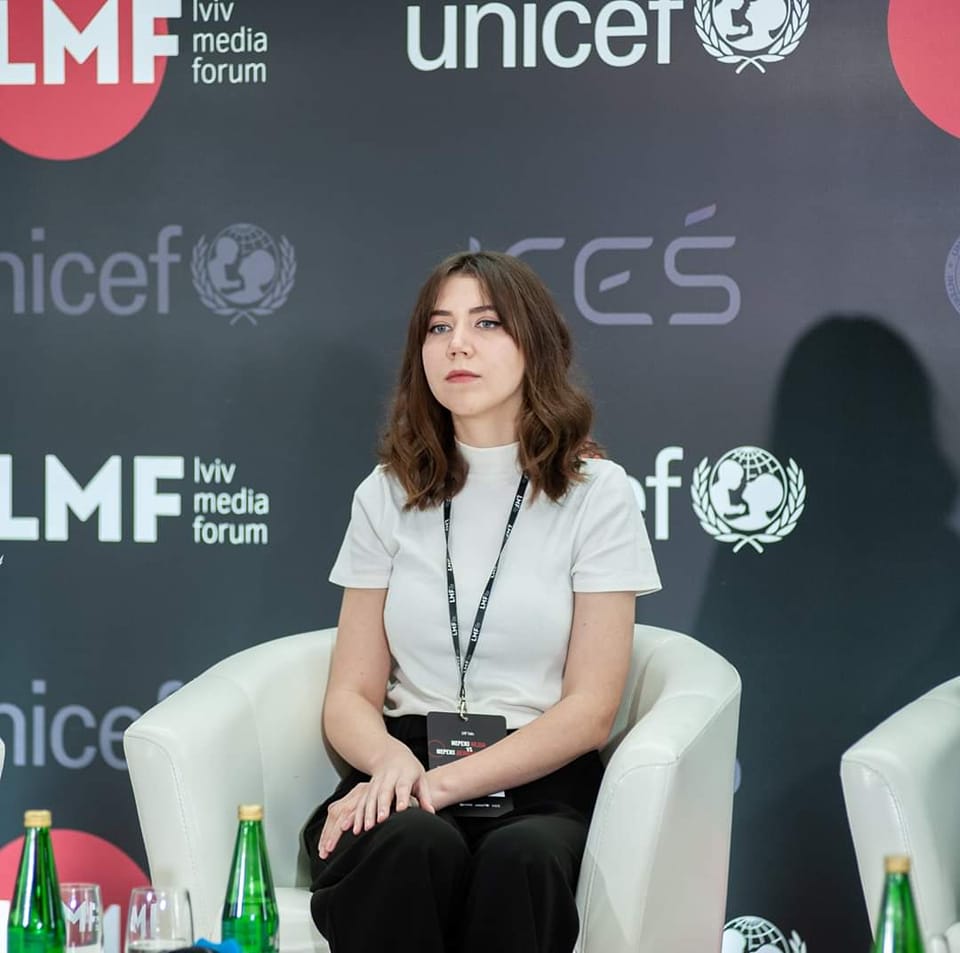
One important, even key, element of russia's full-scale war in Ukraine is the information front. For years, the terrorist country invested millions in a propaganda army to distort information and spread russian narratives that distort reality. It is how the narratives about the "weak state," "oppression of the russian-speaking population," and "Ukrainian fascists" were born. In addition, the daily scaling of hundreds of thousands of fakes about Ukraine and Ukrainians became a powerful weapon of the occupiers. The program director of Detektor Media, as well as the author of the radio blog "Russian fake, go to ***!" Vadym Miskyi and his team record and refute russian lies daily. His top chart of fakes currently looks like this:
- Bandermobiles and "flying death squads" of the "Azov" battalion in Kharkiv.
- Elite Satanists came from the USA to "fight" on the side of Ukraine.
- The USA planned to use Ukrainian birds and mosquitoes to "transmit diseases" and "exterminate the Slavic ethnic group."
- Zelensky "escaped" from Ukraine and records his videos using a green screen.
- There are solid Nazis in Ukraine who need to be "denazified."
- The Ukrainians "themselves" are shelling Bucha, Kramatorsk, Mariupol, and Kharkiv, "themselves" have created humanitarian crises there, and "themselves" are disrupting the evacuation of civilians.
Of course, these russian lies have nothing to do with the truth and even more so with common sense. However, they continue to be produced, and sometimes they are imprinted in the brains of Ukrainians. To spread doubts, since the beginning of the full-scale invasion, according to Detector Media, russia has "increased state budget spending on state TV channels, agencies, and media outlets. The amounts jumped 3.2 times compared to the same period last year. In absolute figures for the three months of 2022, this is the equivalent of 217 million euros."
How russian disinformation affects Ukrainian society, how it can be recognized, and what should be done to protect yourself from it — this is what we are talking about with Ksenia Ilyuk, head of the Research Center of the public organization Detector Media.
How to recognise disinformation?
"Disinformation is under the umbrella of propaganda and is always negative. It is known false or manipulative information, which always aims to harm systematically"
— First, let's explain to our readers what disinformation is.
— People often use the words disinformation and propaganda as synonyms, but they are not. Because propaganda does not have a negative connotation, it can be positive, for example, promoting a healthy lifestyle. The positivity or negativity of propaganda depends on who is doing it and for what purpose. And disinformation is under the umbrella of propaganda and always has a negative nature. That is, it is known false or manipulative information that always aims to harm and does it systematically. When we call something disinformation, this systematic factor is significant. Disinformation is about systemic work. For example, if the media is wrong once, then we do not say they are spreading disinformation. In this case, we can say they spread misinformation. That is, it is about an unconscious mistake and the presentation of inaccurate or distorted facts.
"If you have doubts about any information, ask yourself: what does this information lead me to, who can it benefit, what can it lead to in the long run?"
— How to recognize disinformation? What should you pay attention to?
— To the repetition of russian rhetoric, if we are talking specifically about russian disinformation. These are primarily negative messages. Since disinformation is not a one-time thing, we should always try to understand what it leads to if we receive a piece of information. The task of disinformation is to change human behavior. Therefore, if you have doubts about any information, ask yourself: what does this information lead me, who can benefit from it, and what can it lead to in the long run? Disinformation has a pyramid structure: fakes, manipulations, and half-truths are at its base, followed by messages and ending with grand narratives. For example, the most popular narrative of russian propaganda is "Ukraine is a failed state." Many of the messages that fill it are historical. They talk about, for example, that the Ukrainian language is an artificially created dialect and that Germans/Poles/Austrians created us. And such messages are, in turn, supported by fake historical documents. Disinformation is not directed at rationality; it is directed at emotional thinking.
How and why did the russians create the "not everything is so clear" effect
"russian disinformation is very often aimed at knocking down the human coordinate system"
— What is the primary purpose of disinformation? What is it aimed at?
— Propaganda always aims to "implant" something a person must believe in, regardless of whether it is positive or negative. Disinformation – no. And it is precisely russian disinformation that is very often aimed at simply knocking down a person's coordinate system. That is why we often see how the russian "disinformation" contradicts itself when things that contradict each other are spread. And this is done deliberately to drive a person into a state of cognitive dissonance so that a person moves into the category of mistrust of everyone. They start thinking that there is no truth and that "not everything is so clear-cut." russian disinformation tries to put people in a state of paranoia. Later, depending on specific tasks, people are "mobilized," and their state of confusion is replaced by some specific actions or vice versa — inaction.
"In 80% of cases, russian disinformation is primitive, repetitive and at times downright stupid"
— How do the russians create disinformation?
— I think you just need to have a vivid imagination. In 80% of cases, their disinformation is primitive, repetitive, and sometimes downright stupid. A popular russian disinformation tactic is the "fool yourself" technique. Like, "it's not us, it's all Ukrainians." On my Twitter account, I collected all propaganda versions about why this full-scale invasion had to be carried out on February 24. There were 11 "reasons" collected. If you put them all together, it turns out Ukraine is a super-powerful nuclear state.
- First. A version about Ukrainian Nazis and the Nazi government.
- Second. Version "Ukraine would have attacked anyway." At first, they said that we were planning to attack Crimea. Later they changed their rhetoric and started talking about Transnistria, Belarus, and eventually about an "attack" on russia.
- Third. Information about Ukrainian bio laboratories, where we make "X-men," "X-geese," etc.
- Fourth. Ukraine was developing nuclear weapons and potentially becoming a nuclear state.
- Fifth. Ukraine was going to destroy russia with the hands of the West.
— What methods of information weapons, besides disinformation, do citizens still need to know about?
— There is such a concept as misinformation. It cannot be called an information weapon because it is rather about false or manipulative information that is not systematic and does not contain malicious intent. But the russians often use it, trying to turn it into disinformation. Also — malinformation. It concerns true information and personal data. My favorite example of malinformation is when Detector Media released a study on Telegram channels, and they, in turn, launched a campaign to discredit DM. Yes, they took the DM's public financial report, but they wrote that it was highly secret information they managed to get. They also found photos of 12 DM employees and divided the entire annual budget between them, describing it as "one million per brother." This is what misinformation is all about — that specific known information is used to discredit—discrediting people, companies, parties, states, etc. In the case of the military, they can also take information about them in social networks to use it during torture to terrorize relatives. It is also essential to talk about informational and psychological operations. From February 24, we started calling everything IPSO, but this was a mistake. Special services handle IPSO, and not just any disinformation is IPSO. First, it is very, very difficult for non-IPSO specialists to see. Because these are both several-day and long-playing things, they are sensitive and careful. Therefore, it is incorrect to call any fake IPSO.
Anonymous Telegram channels and other damage
— Through what channels and how quickly does disinformation most often spread?
— Messengers, anonymous Telegram channels, Viber groups, and social networks in general. But despite this, for example, the same Facebook has less outright misinformation than Telegram. We are trying to investigate to what extent the information from these anonymous channels is actually passed on because there is an assumption that part of this audience is russian. Part of it is made up of bots. And that is why the real influence of anonymous Telegram channels is constantly in question.
— And which Telegram channels would you not recommend reading?
— I urge people to reject anonymous sources of information, not to read them at all. Telegram has many channels that mimic media, reposting news, but they are not toxic. In principle, it seems that there is nothing wrong with such channels. However, there are many cases when such channels are simply bought over and gradually begin to give disinformation, or they can completely reformat the channel. There were situations when our readers texted me, saying, "Telegram subscribes me to channels that I didn't subscribe to." And I explain to people that Telegram itself does not subscribe; you simply subscribed to, for example, "Quick Recipes," but someone bought the channel, renamed it, and made it a source of very toxic information. If you are explicitly interested in the names of the channels that should not be read, then there is an SBU list. Many names of Telegram channels are managed, in particular, directly by the Central Intelligence Agency of russia. But the Media Detector research shows that the number is much larger because hundreds of channels refer to those from the "SBU list."
"russian disinformation can leave us with thoughts and ideas somewhere at the subconscious level, which sooner or later the brain will connect, and it will seem logical. It is toxic information that does not help"
— Why should you not read anonymous channels, even if you want to get a seemingly different opinion, read about a different position?
— I urge you not to read propaganda resources because we often underestimate their influence. russian disinformation can leave us with thoughts and ideas somewhere at the subconscious level, which sooner or later the brain will connect, and it will seem logical. It is toxic information that does not help. I advise you to read analytics. To understand what reading such things leads to and why such information is distributed. Professionals work there. Yes, Ukrainians are now starting to understand data better, but imagine that you are going to the ring with the world champion after a month of boxing. This information is provided by people who do it professionally every day of their lives, so it should not be assumed that we can easily fend off them. I joke that if I have any severe mental problems in my old age, it's because I have to analyze Shariy's Telegram channel as part of my job. After all, even my professional brain is not ready to read so much toxic content.
russian narratives and how to refute them
— In your opinion, what russian narratives are most often promoted by russian propagandists in Ukraine and to the international audience?
— The pyramid narrative I described above is the highest level; it is a story that explains how the world is organized.
- The first russian narrative is that "Ukraine is a failed state." It is filled with a whole series of messages about corruption, history, utility prices, etc.
- The second narrative is that "Ukraine is under foreign rule" with complex messages about "siblings." russian propaganda so often adjusts those who own Ukraine to an information pretext that after we calculated all the "owners," we got a long list from the USA to Soros and Freemasons. Sometimes I joke that I want to get to their coordination meeting to see how they make decisions and how the meeting of Ukraine's "rulers" takes place. At the international level, russia actively promotes this narrative on the territory of countries that have historical similarities with Ukraine. It is either Soviet occupation or countries with a colonial past. For example, the narrative of external governance is very actively promoted in Latin America.
- The third russian narrative speaks of "Ukrainian Nazis and the fact that Ukraine is a Nazi state." It is also present in our country, but it was primarily created for a Western audience. The biggest problem is that journalists have made this narrative in the world media. And it's actually terrifying when in the world's top media outlets, you can find supposedly research materials that claim the manifestations of Nazism in Ukraine.
There are about ten russian narratives, and they sometimes gain or lose popularity. In general, russian propaganda does not change in any way; they constantly keep their narratives in the info field, periodically changing their priority.
— How can russian narratives be refuted?
— It is important to study the pyramid: there are fakes, manipulations, and conspiracy theories, then there are messages, and then there are big narratives. When receiving information, it is necessary to pass it through this pyramid, then it crystallizes and is structured. For example, a fake launched multiple times, that PrivatBank will not work tomorrow, or Privat cards will be blocked, so it is necessary to withdraw cash urgently. It's hard for people to believe this is a russian fake, but it really is. People may have a question: why would russia launch such a small fake?
- First, a person finds themselves in a state of stress, and if a person is forced to feel some emotion, whether negative or positive, this is already the first bell that something is wrong.
- Secondly, suppose we continue to put information through our pyramid. In that case, we immediately think that something is not working in Ukraine, which leads to the idea that we have bad banks, which means a bad economy and, in conclusion, a bad state. As a result, we come to the narrative that "Ukraine is not a state at all and we cannot have anything normal," not even a bank.
As for how to debunk such narratives, this is a super-task because a vast complex of completely different measures must work here:
- First of all, this is constant strategic and systematic communication. russian disinformation can be stupid, but if a person is told the same thing a hundred times, sooner or later, it will stick somewhere in their head.
- Just as important is exposing russian disinformation and explaining how it works. It is very remarkable that in 2014, Ukrainians realized that Ukraine is not russia, but then the question "what is Ukraine?" arose. And now we are filling in the meaning of "what is Ukraine for us" literally and practically because as soon as some information gaps appear, russia fills them. Therefore, our task as a society is to generate and create these meanings constantly.
- There are also a lot of important minor media adjustment tools. For example, we can see bizarre pop-up ads on various sites with titles like "find out what happened to Alla Pugacheva," etc. Advertisers are essentially selling these sites without verifying what is being advertised there. And some studies found that even on the top sites, russian propaganda was circulating at the expense of these platforms because they simply bought these spots for advertising and publishing fakes and messages and formed their narratives there. Civil society is currently working with similar top organizations to develop a self-regulation mechanism and protect themselves from similar situations.
No single tool will solve all of our problems, so there must be an integrated approach.
— Your TOP-5 of the most strange and shocking fakes the russians have launched since the beginning of the full-scale war?
- All fakes related to bank cards and PrivatBank, namely misinformation that you must withdraw all your money because all banks will soon close. Many people don't know that this is also russian disinformation being launched over and over again.
- Photo fakes about Ukrainians with a swastika and Nazi symbols tattoos often spread on the network and work for specific categories of people, not only in Ukraine. A fake text is one thing because it's easier for a person to believe that it's not true, but when people see a photo, even if it's photoshopped, it's harder for their eyes not to believe it.
- For example, a fake in which an alleged screenshot from the phone of a Ukrainian soldier who died was used. The last conversation with his mother was on the screenshot, where there were messages "To die for Zeleny (ed. green) (because Google Translate translated the surname Zelensky as "green") is an honor," and "Bandera is looking at you from heaven," or the last message of the soldier – "I would love to have some salo now…". This fake shows the extent to which russians have a stereotypical vision of Ukraine.
- A fake from foreign media about pig people. The news that "pig people were created in Ukrainian bio laboratories," where photos were also published, was even printed in some foreign newspapers.
— How can a reasonable person with common sense believe in this?
— Similar fakes are very often aimed at the russian audience, so we differentiate them, and if the fake is not circulating in Ukraine, we do not refute it. We do not drag it into the Ukrainian information space. In general, russian propaganda is built on the sacralization of the past and the concept of the Second World War; that is, it is not about the future. But sometimes, russians try to be modern and take scenarios from the future. For example, the last James Bond movie featured a weapon that targets people by their DNA to exterminate a specific race. And in a massive part of the story about "Ukrainian bio laboratories," it is said that the Ukrainians created a weapon that, based on DNA, was supposed to destroy only russians. That is, it is possible that they simply used the film's plot to create their fakes.
How to counter russian disinformation?
— How can citizens independently learn to distinguish between manipulation, fraud, and misinformation? Your instruction.
— When I am asked what the best way to counteract russian disinformation on a personal level is, I answer – to have a philosophy "for the future" and common sense, that is, look into the future. First of all, it is necessary to accept that the world has changed and information is now a weapon that attacks and will attack us, even in peacetime, because we are constantly in front of screens. The volume of information is continuously increasing. Information resilience studies show that understanding the threat and where it might come from is the first line of defense. Therefore, it is essential to accept reality and remember that russian propaganda does not sleep and can be waiting for us in absolutely all spheres of life. It is essential to ask questions as often as possible and not necessarily give yourself answers immediately. Such an internal dialogue forces the brain to understand information from the other side and bypass our cognitive distortions. And a key piece of advice is to make it a habit to read professional organizations researching disinformation and the information space. Critical thinking, the ability to search for information, and understanding what misinformation is and what is true is also essential skill today. The best example of Ukraine's effectiveness is that, despite an incredibly huge wave of russian disinformation with huge budgets, polls in the first months of a full-scale war showed that more than 80% of Ukrainians confidently believe in victory. It is the best indicator that we are effectively countering russian disinformation.
— Finally, what do you think will help us win the information war?
— At the state level, we lack systematic approaches and communication, so I want the state to communicate with Ukrainians as adults. I'm a big fan of telling people information because we have a lot of discussions about not telling people much. And that's true; a lot of sensitive information directly relating to military operations and affecting them cannot be said. But if we are talking about threats, then we need to talk about them frankly and sincerely because, in my opinion, Ukrainian society has shown itself quite well in terms of organization. Therefore, to self-organize, people must understand what awaits them. If it is difficult, we need to talk about it and not about the fact that we will conditionally "grill kebabs." Ukrainian society has proven that we organize ourselves well and are the state's engine. It is not state institutions that hold Ukrainian society, but Ukrainian society holds state institutions.

Human rights defender's explainer on collaborationism: residents of occupied territories, punishment, and wrong decisions

Layoff because of war, extended working hours, and timely salaries: How to protect your labor rights now?











